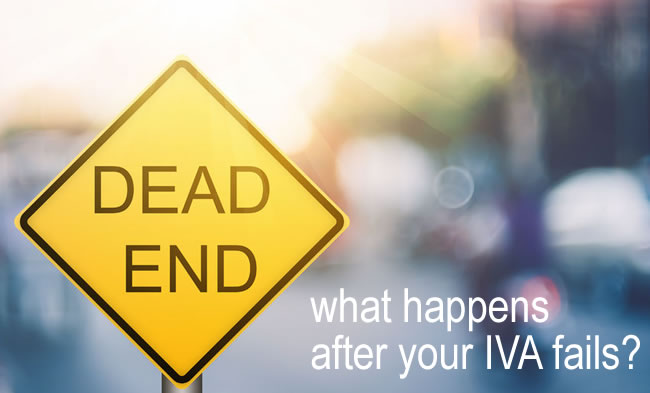Whilst many individuals opt to enter into an Individual Voluntary Arrangement (or “IVA”), it’s important to recognise that not all types of debt can be incorporated into this type of arrangement – and this is a fact many debtors simply aren’t aware of.
What is an IVA?
An IVA is a formal and legally binding agreement which is made between both you and your creditors to repay any debts you might have. In order to be eligible there are certain types of criteria to comply with and only certain debt types can be incorporated into one.
What type of debts can be included in an IVA?
Whilst it’s fair to say that the vast majority of debts can be incorporated into an IVA they’re more typically used to address the following debt types:
- Unsecured loans or overdrafts
- Credit card debts
- Store cards
- Catalogue accounts
- Charge cards
- Council tax arrears
- Certain tax debts
- Utility bills (such as telephone bills, gas or electricity)
What type of debts can’t be included in an IVA?
There are certain debt types that you can’t incorporate into an IVA, for example:
- Maintenance arrears
- Child support arrears
- Student loans
- Magistrate Court fines
What happens to the debts I can’t include in an IVA?
Even if you pick the best IVA company If there are certain debt types that you can’t include in an IVA, then you need to ensure that you have sufficient funds to pay for these separately. Consequently, you might be advised to make contact with the creditors who can’t be repaid via any proposed IVA to see what type of repayment terms they might accept by way of settlement. You then need to consider the total amount of these repayments before deciding whether you can enter into an IVA.
I’ve got debts with my partner. Can these go into an IVA?
If you have joint debts (perhaps with a partner or other family member) then these can’t be incorporated into a “joint” IVA as this type of arrangement can only cover one person. That said, whilst you can’t do a joint arrangement per se, you might be able to take out individual IVA’s which are then connected together. These are known as ‘interlocking’ IVA’s and if most of your debts are joint then this is certainly an option you might want to consider.
Can I include mortgage or rent arrears?
Whilst it’s certainly possible to include mortgage or rent arrears into an IVA, it’s highly likely that your lender (or landlord) will object to this type of arrangement. This is because mortgage or rent arrears are classed as ‘secured’ lending and mean that your lender (or landlord) can take possession of your property. In reality, the vast amount of lenders or landlords are unlikely to agree to an IVA for rent arrears since they’ll be more concerned about getting their property back and ultimately, limiting their losses in terms of future income.
Debts Excluded from an IVA
While an IVA can help manage many unsecured debts, certain obligations cannot be included in the arrangement. These typically include:
- Secured debts (e.g., mortgages, car finance) – these remain tied to your property or vehicle.
- Student loans – government-backed education loans are not covered under an IVA.
- Court fines and penalties – criminal and civil fines must still be paid in full.
- Child support and maintenance – ongoing family support payments cannot be frozen or reduced.
- Council tax arrears – local authority debts are excluded from IVA proposals.
If you still need to address some of these excluded debts, you might consider alternative borrowing options that are designed for smaller sums. For example, a small personal loans could help bridge gaps for essential payments, but always review terms carefully to avoid additional financial strain.
Understanding the Impact of an IVA on Your Credit Score
Entering into an IVA will be recorded on your credit report for six years from the start date. During this time:
- New credit applications may be declined or offered at higher interest rates due to the IVA marker.
- Lenders will view you as a higher-risk borrower, making conventional lending less accessible.
- It can be challenging to obtain a mortgage or larger personal loan until the IVA has been satisfied.
However, an IVA can also provide a clear route to becoming debt-free. By sticking to the agreed payment plan, you demonstrate financial responsibility, which can help you rebuild your credit profile after completion. If you’re concerned about rebuilding credit once your IVA ends, you could explore options such as bad credit loans guaranteed approval, but proceed cautiously and compare rates to find the most affordable solution.
Alternatives to an IVA for Short-Term Financial Needs
If you’re facing an urgent financial shortfall but an IVA isn’t yet the best option for your circumstances, consider some short-term financing alternatives:
- Payday or short-term cash advances: These can provide quick access to cash, but remember they often carry high fees and APRs.
- Interest-free credit card offers: If your credit score allows, a 0% APR balance transfer or purchase card can help you spread repayments without immediate interest.
- Borrowing from family or friends: A no-interest agreement may give you breathing space, provided clear terms are agreed in writing.
For truly urgent needs, a $500 cash advance no credit check could help cover essential expenses. Always compare the total cost of borrowing and ensure you can repay within the agreed term to avoid spiraling debt.
Secured Debts and How They Affect Your IVA
Secured debts are tied to an asset (e.g., your home or car). Because the lender’s security remains in place, these debts usually cannot be included in an IVA unless you decide to surrender the asset. Key considerations:
- Mortgage Arrears: If you have fallen behind on mortgage payments, speak directly with the lender before proposing an IVA. They may require separate arrangements or insist on repossession proceedings outside the IVA.
- Car Finance: You must continue to pay car finance or risk vehicle repossession. Alternatively, you could discuss a refinancing option.
- Repossessions: Any secured loan not maintained could lead to the asset being repossessed, regardless of IVA status.
If you need to refinance or consolidate a secured debt before entering into an IVA, you may find options through private money lenders for personal loans. However, secured refinancing also carries risks; ensure you fully understand the terms and impact on any collateral.
The IVA Proposal Process: Timeline and Expectations
Understanding the steps involved in setting up an IVA can alleviate uncertainty. Typically, the process follows this timeline:
- Initial Assessment (1–2 weeks): An Insolvency Practitioner reviews your debts, income, and expenditure to determine IVA suitability.
- Draft Proposal (2–4 weeks): A formal IVA proposal is prepared, outlining your monthly contribution and how we will deal with creditors.
- Creditor Voting Period (15–28 days): Creditors vote on whether to accept the IVA; 75% by debt value must agree.
- Formal Approval (1–2 weeks): If approved, the IVA becomes legally binding on all participating creditors.
- Repayment Phase (5–6 years): You make agreed payments each month; at completion, remaining unsecured debts are written off.
While waiting for approval, having access to emergency funds can be crucial. In some cases, applicants explore options like a $1,000 quick loan no credit check to cover short gaps in cash flow. Always confirm that any additional borrowing will not jeopardize your IVA proposal.
Life After Your IVA: Maintaining Financial Stability
Once your IVA is completed, you can move toward rebuilding your financial health. Key steps include:
- Review Your Credit Report: Check that the IVA status is marked as “Completed” or “Satisfied” and monitor for any errors.
- Create a Budget: Allocate income toward saving and rebuilding an emergency fund to prevent future reliance on high-interest credit.
- Establish or Rebuild Credit: Consider a secured credit card or similar low-limit facility and make regular, on-time payments.
- Avoid High-Cost Borrowing: While it may be tempting to use unconventional lending post-IVA, be aware that high risk personal loans often carry steep interest rates and fees.
By following these steps, you’ll be better positioned to maintain financial stability and avoid falling back into unmanageable debt.








Leave a Reply: